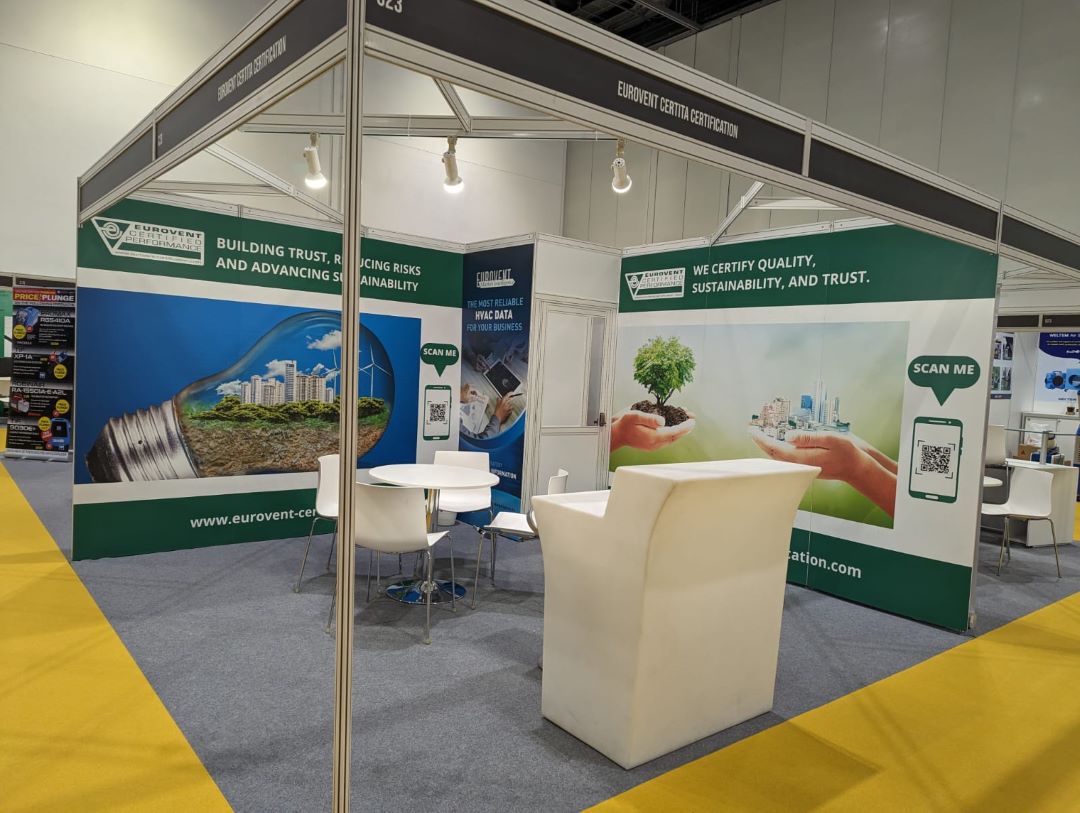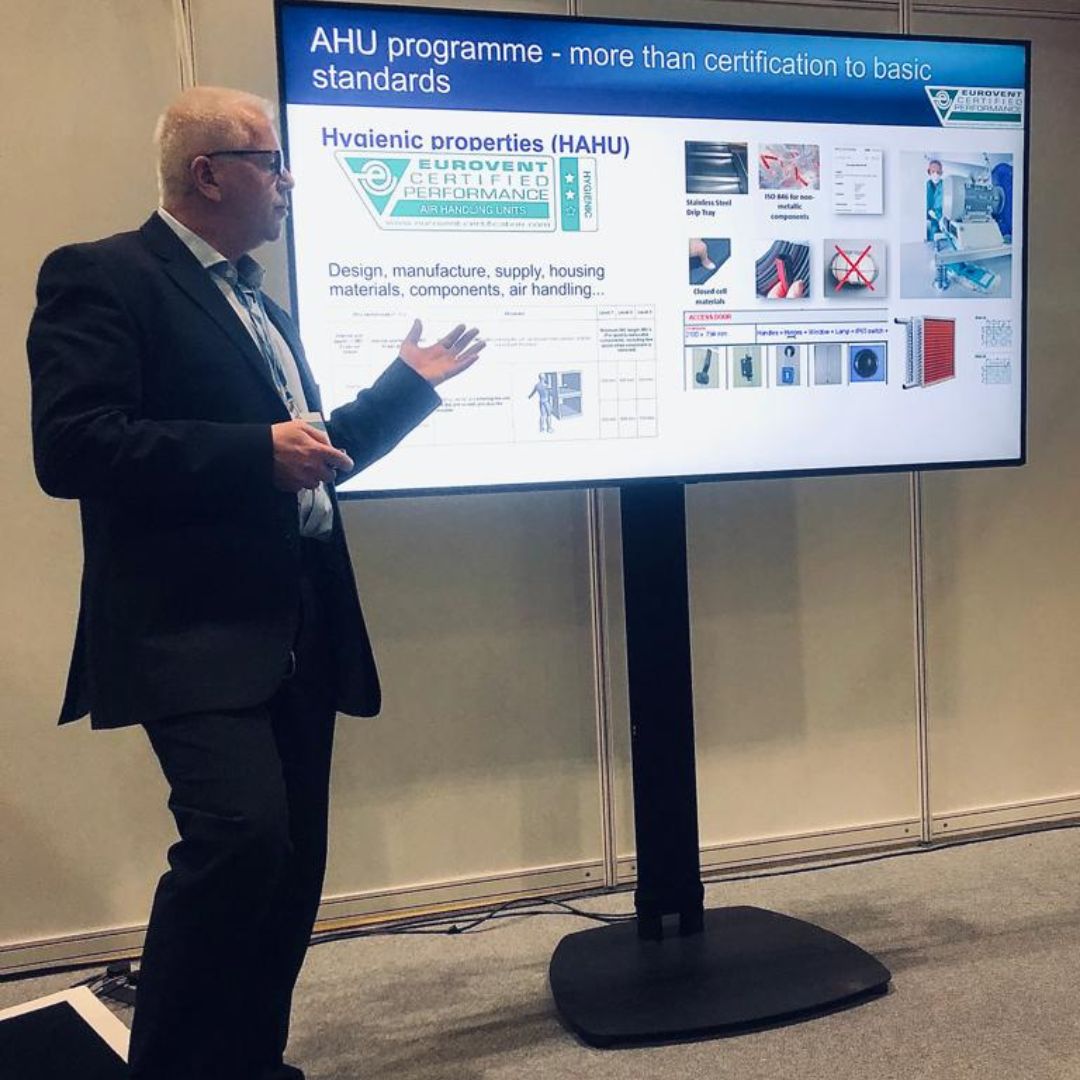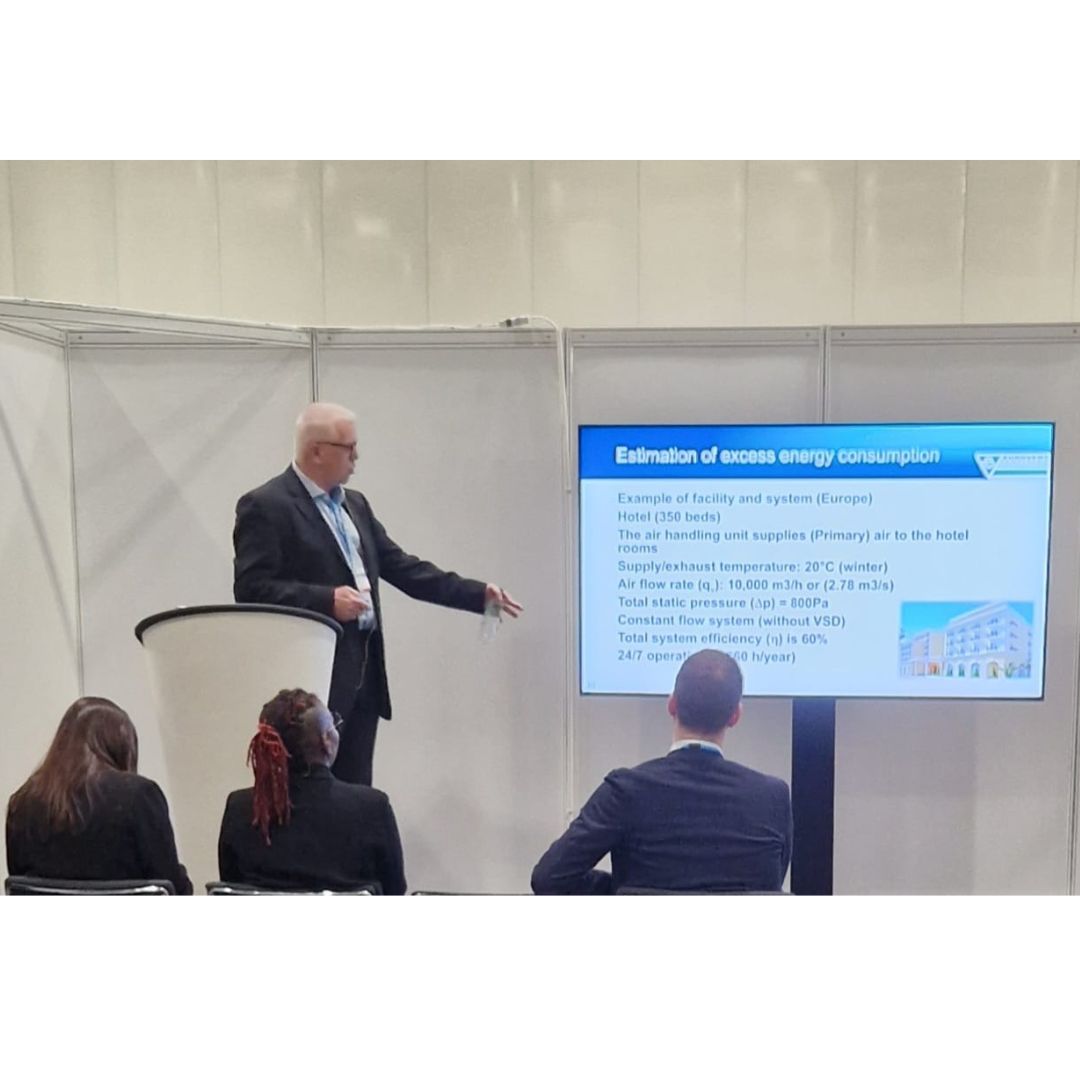Noticias
HVAC & Refrigeration Live returns to London
After a COVID-19 enforced break, it was the turn of the UK’s HVAC & Refrigeration Live to reopen its doors from the 18th-19th April, at the ExCel London. Eurovent Certita Certification (ECC) exhibited at the 2-day event, with colleagues from Eurovent Association and Eurovent Market Intelligence (EMI) manning the exhibition stand. The team also got involved in the seminar programme with ECC’s Business Partnership Manager, Ian Butler, presenting on the importance of reliable air handing unit data, while EMI’s Market Intelligence Analyst, Beyza Aykurt compared the British vs European HVACR market.




HVAC & Refrigeration Live is the UK’s only dedicated, national exhibition for the heating, ventilating, air conditioning and refrigeration sectors. Providing a mix of global exhibitors and a varied conference programme, the trade show provided the opportunity to network and learn about products and industry issues.
On day one, Ian Butler took to the conference theatre to present, ‘Reliability of air handling unit declared data vs. actual energy consumption’. The seminar began by exploring the three global crises impacting the UK industry, including the energy crisis, climate change and inflation. Introducing the importance of reducing energy consumption, emissions and cost, Ian then went on to discuss the impact that Air Handling Units (AHUs) have on the energy consumption of buildings.
Exploring the many factors needed to create energy efficient systems, Ian highlighted the two key issues of higher than declared internal resistance (pa) within an AHU, and lower than declared heat recovery energy efficiency performance. He was at pains to emphasise that even in well designed and installed systems, these elements will result in excessive fan power, higher sound levels, excessive energy consumption, higher bills for the end user, and potential non-compliance with regulations.
Moving onto Ecodesign Regulations and the ErP Directive, Ian discussed the woeful level of market surveillance and compliance checking, along with the lack of verification of actual energy efficiency. Warning the audience not to assume that all product data provided is correct, Ian next gave examples of real-life test results from non-certified products, showing how vital it was to use manufacturers whose product data had been independently verified by an accredited organisation. Explaining the various levels of voluntary certification - and its impact on reducing the risk of non-compliance and excess energy consumption - Ian went on to further discuss the role and process of Eurovent Certified Performance, and certification programmes for AHUs and Hygienic AHUs.
Ian concluded his presentation by explaining how specifiers and installers can identify energy efficient products via ECC’s online certified product directory and the energy label for both cold and hot and humid climates. Ian finished by showing the real-life energy and cost savings that can be made by choosing energy efficient products.
On day two, it was Beyza Aykurt’s turn in the conference theatre to present, ‘British vs European HVACR market: Comparison of key features and market evolution.’ The presentation started with an introduction to Eurovent Market Intelligence, including information on the team, its methodology, along with the range of data collected and reports delivered. Beyza then delved into the main topic of the seminar, the British HVACR market within Europe. Comparing market size by millions of euros and market share, Beyza gave an overview of a number of products including AHUs, chillers, air filters, Variable Refrigerant Flow (VRF), heat exchangers, IT cooling, fan coil units (FCUs), rooftop units, cooling towers and chilled beams.
Next Beyza focussed in on key products for the UK, including IT cooling, AHUs, chillers, FCUs and rooftop units. She explained how IT cooling had become a particularly strong area, thanks to the size and sheer number of data centres in the UK. Showing that installed units were dominated by CRAC (57%) and AHUs (26%), Beyza talked through the data on types of units sold, technology used, unit capacity, free cooling capabilities and gave a breakdown of refrigerants used in the market.
Beyza then covered AHU market share by unit type, average energy class and average airflow capacity. In the UK market, she pointed out that the percentage of units installed with rotary heat exchangers and integrated controls was significantly higher than the European average. Next on Beyza’s hit list were chillers above 50Kw. Ranking them by capacity, product type, compressor type and refrigerant, the data showed that the UK generally install bigger chillers than the European average.
FCUs and rooftop units were the last two products to be analysed, with FCUs compared by market share of 4-pipe vs 2-pipe, product type, fan type and control type. The UK FCU market is dominated by low energy consumption and ducted units, with the majority of systems utilising controls. Last but not least, rooftop units were compared by capacity, product type and heat recovery technology. The data showed 70% of the UK market is reversible, with a preference for smaller units.
Beyza finalised her presentation by looking back at the market evolution for AHUs, chillers, FCUs and rooftops based on sales volume in euros from 2019-2022. The statistics gave an interesting insight into how each sector had recovered post COVID-19.
Both Ian and Beyza’s presentations were well received, with the 2023 HVAC & Refrigeration Live a first ‘toe in the water’ for the return of large HVAC and refrigeration events to London.
Visit hvacrlive.com for more information on the show.


